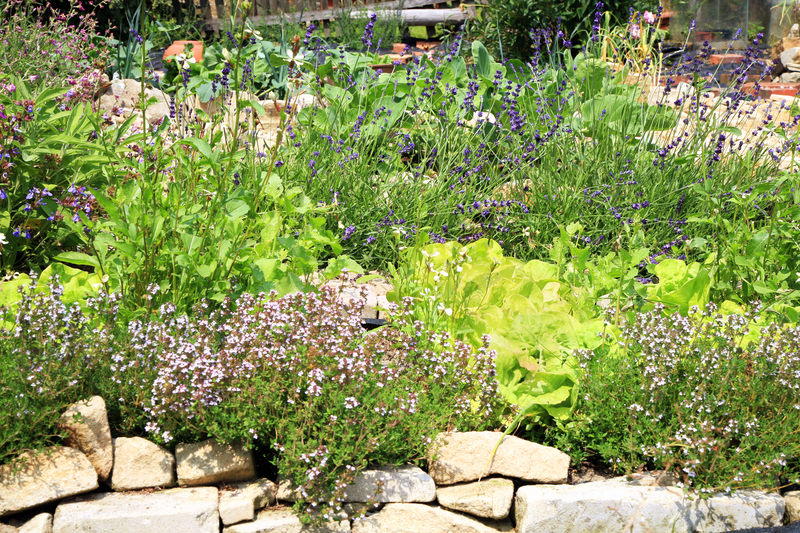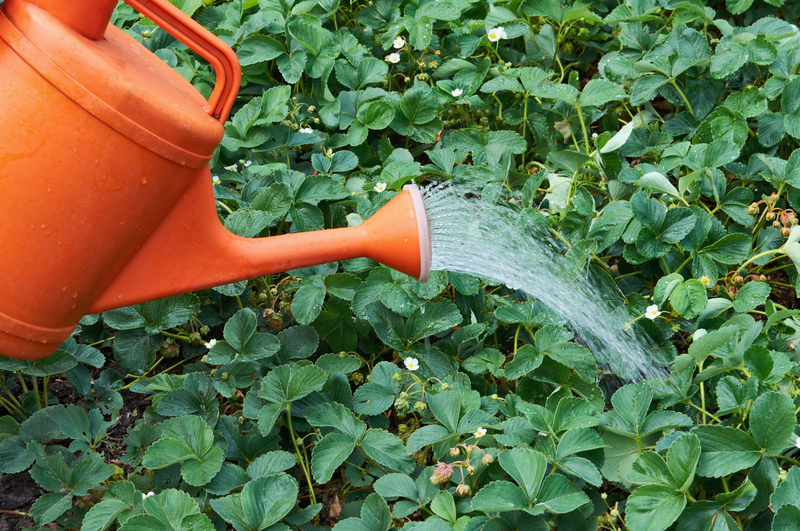Mastering Hedge Trimming with Unique Techniques
Posted on 22/06/2025
Mastering Hedge Trimming with Unique Techniques
Are your hedges looking untidy or uneven? Achieving perfectly sculpted and healthy hedges is both an art and a science. With garden aesthetics increasingly valued, mastering hedge trimming becomes essential for a polished landscape. This comprehensive guide dives into unique hedge trimming techniques, tools, expert tips, and best practices to help gardeners, landscapers, and homeowners transform their greenery into a living masterpiece.
Why Hedge Trimming Matters: Beyond Curb Appeal
Regular trimming not only enhances your property's visual appeal but also strengthens the health and longevity of your shrubs. Well-maintained hedges act as privacy screens, sound barriers, and even windbreaks, providing functional beauty. Mastering hedge trimming techniques ensures your living walls grow densely, develop robustness, and resist disease.
- Promotes New Growth: Trimming stimulates fresh shoots, making your hedge lush and dense.
- Controls Shape and Size: Keeps hedges neat and prevents them from overtaking spaces.
- Enhances Plant Health: Removes diseased or dead wood, improving air circulation.
- Boosts Curb Appeal: Beautifully trimmed hedges elevate any garden design.

Getting Started: Essential Tools for Hedge Trimming
Before you explore advanced hedge trimming techniques, gather the proper tools for a safe and efficient workflow:
- Hedge Shears: For small, detailed shaping and topiary work.
- Electric or Gas Hedge Trimmers: Best for larger jobs and consistent results.
- Pruning Loppers & Saws: For thick branches and rejuvenation pruning.
- Gloves and Safety Goggles: Protect hands and eyes during trimming.
- Measuring Tape/Strings: Ensures symmetry and straight lines.
- Ladders or Extendable Trimmers: Safe access to tall hedges.
*Tip: Always sharpen your tools before starting to make clean cuts that heal quickly.*
Understanding Your Hedge: Growth Habits and Timing
Not all hedges are alike! Some, like boxwood and privet, handle frequent shaping, while others, such as laurel or photinia, require light-handed care. Identifying your hedge type helps determine the optimal trimming schedule and techniques:
- Deciduous Hedges (e.g. beech, hornbeam): Best trimmed when dormant in late winter.
- Evergreen Hedges (e.g. yew, box): Prefer gentle shaping in early summer and light touch-ups late summer.
- Flowering Hedges (e.g. forsythia, lilac): Prune immediately after flowering to avoid removing next year's buds.
Pro Tip: Never trim in extreme heat or drought as new growth may scorch.
Preparing for Trimming: Setting Up for Success
Preparation ensures precise trims and a safe workspace. Here's a quick checklist before you start:
- Clear the area around your hedge of obstacles and debris.
- Wear protective gear: gloves, goggles, and long sleeves.
- Assess your hedge for nesting birds or animals--avoid disturbing wildlife.
- Mark straight lines with string for perfectly flat tops.
- Ensure tools are sharp, lubricated, and in good working order.
Classic vs. Unique Hedge Trimming Techniques
Most gardeners know the standard "up and down" or "side to side" scan with shears. But unique hedge trimming techniques can unlock truly eye-catching results.
The Tapered Cut: Encouraging Fullness
The tapered cut is a fundamental skill in hedge maintenance. It involves trimming the base of the hedge slightly wider than the top. This technique ensures sunlight reaches the lower branches, preventing sparse, leggy growth.
- Visualize an inverted "V" or gentle slope on each side.
- Keep sides at approximately a 5-10 degree angle.
- This method is key for formal hedges and privacy screens.
Topiary and Artistic Trimming
Ready to go beyond the box? Topiary is the artful shaping of hedges into ornamental forms--spirals, cones, animals, or geometric shapes:
- Start with a simple frame, using wire or bamboo for guidance.
- Use hand shears for precision and control curves carefully.
- Regular light trimming keeps shapes crisp and well-defined.
A unique hedge trimming strategy, topiary requires patience, vision, and continual upkeep.
The Cloud Pruning Technique (Niwa-gi)
This Japanese-inspired trimming method transforms ordinary hedges into a series of undulating cloud forms. It's popular for azaleas, boxwoods, and pines:
- Visualize "clouds" along each branch or section of hedge.
- Trim into rounded, puffy mounds, spacing them unevenly for natural appeal.
- Thin interior growth for better light and airflow to each cloud.
The result is a sculptural, organic hedge--a showpiece in any garden.
Wave and Undulating Patterns
For a dramatic contemporary look, try wave-shaped profiles instead of flat tops. This advanced trimming method creates visual movement and flow:
- Mark out the desired crest and trough of each wave using string or stakes.
- Work in sections, trimming gently to achieve the rolling effect.
- This technique works beautifully with yew, privet, or beech.
Freeform and Naturalistic Trimming
Let your hedges reflect nature's hand by allowing them a looser silhouette. Naturalistic trimming removes only unruly or damaged growth, subtly encouraging the hedge's inherent shape.
- Focus on correcting asymmetry and promoting natural branching.
- Use hand shears and selectively thin dense areas.
- This approach supports pollinators and biodiversity.
Expert Advice: Trimming Techniques for Healthier Hedges
1. Mind the Seasons
When you trim is as vital as how. Deciduous hedges thrive when pruned in late winter or early spring, while evergreens prefer summer trims.
2. Follow the "One-Third Rule"
Avoid cutting more than a third of the foliage at once--overzealous trimming can shock your plants and stunt their growth.
3. Use Clean, Sharp Tools
Dirty or dull blades crush stems and spread disease. Sterilize trimmers with rubbing alcohol between uses, especially if trimming sick or pest-affected branches.
4. Shape Early and Often
Start training hedges while young for easier long-term maintenance. Frequent light trimmings help establish shape and promote density.
5. Prune for Airflow and Light
While shaping, peer inside your hedge and thin crowded areas gently to let light and air reach the interior. This discourages fungal diseases and keeps lower branches vigorous.
Step-by-Step: How to Trim a Hedge Like a Pro
- Plan Your Approach: Decide on formal or informal style. Mark lines and shapes with string for guidance.
- Start with the Sides: Trim upwards in sweeping motions for clean, even cuts. Follow your preset guidelines.
- Trim the Top Last: Move steadily along the top, maintaining level with string or stakes.
- Step Back and Inspect: Regularly review your work from a distance to adjust and fine-tune.
- Clean Up: Remove all clippings and dispose of diseased material to prevent pest issues.
For unique shapes like waves or clouds, work in gradual stages, refining the profile at each pass.
Maintenance and Aftercare: Prolonging Hedge Health
- Water deeply after heavy trims to reduce plant stress.
- Mulch around base for moisture retention and weed control.
- Fertilize with a balanced product in spring to fuel new growth.
- Monitor for pests and diseases and take prompt action if detected.
*Consider composting healthy clippings or using as mulch.*
Solving Common Hedge Trimming Problems
- Browning "Holes" in Hedges: Usually caused by cutting too much at once or trimming in heat. Stick to seasonal guidelines and gradual thinning.
- Thin Base, Dense Top: Indicates insufficient light at lower branches. Correct with a wider base using the tapered cut method.
- Uneven or Crooked Shapes: Use strings, stakes, or level guides for straight lines. Step back often for perspective.
- Poor Regrowth After Trimming: Check trimming schedule and review plant species requirements. Feed and water regularly.
Eco-Friendly Hedge Trimming Techniques
For sustainable gardeners, green hedge maintenance means:
- Trimming less frequently and favoring hand tools over gas-powered for reduced emissions.
- Avoiding trimming in peak bird nesting seasons (spring-early summer).
- Leaving some hedges loosely cut for wildlife habitats and flower resources.
- Composting clippings or using as mulch for soil health.
Sustainable hedge trimming nurtures both your landscape and the environment.

Frequently Asked Questions (FAQs) About Hedge Trimming
Q: How often should I trim my hedge?
It depends on the species! Vigorous growers like privet may need monthly trims in summer, while slow-growers like yew or boxwood can be shaped 1-2 times a year. Regular maintenance (light trims) keeps hedges looking crisp.
Q: What is the best time of year for trimming hedges?
Generally, late winter to early spring before bud break is ideal for most deciduous hedges. Evergreens can be shaped in early summer. Avoid hot, dry periods or when plants are under stress.
Q: Can I drastically cut back an overgrown hedge?
Many hedges (like yew or privet) respond well to rejuvenation pruning, where old stems are cut back hard to promote fresh growth. Others, like leylandii or conifers, may not regrow from old wood. Research your plant before hard pruning.
Q: How do I get perfectly straight hedge lines?
Use taut string stretched between two stakes at the desired height as a visual guide. For taller hedges, a level and measuring tape ensure accuracy.
In Summary: The Art and Science of Mastering Hedge Trimming Techniques
Embrace the transformative power of unique hedge trimming techniques to elevate your outdoor space. With the right tools, know-how, and creative inspiration, you'll not only maintain excellent hedge health but also enhance your garden's aesthetic appeal. Remember, hedge trimming is a living art form--practice regularly, experiment with unique shapes, and enjoy the process of crafting green architecture.
- Understand your hedge species and growth habits
- Follow seasonal best practices for trimming
- Use innovative and unique trimming methods for distinctive style
- Maintain tools and aftercare routines for healthy, vibrant hedges
Ready to master hedge trimming? Apply these expert techniques, and your hedges will become the envy of your neighborhood!

